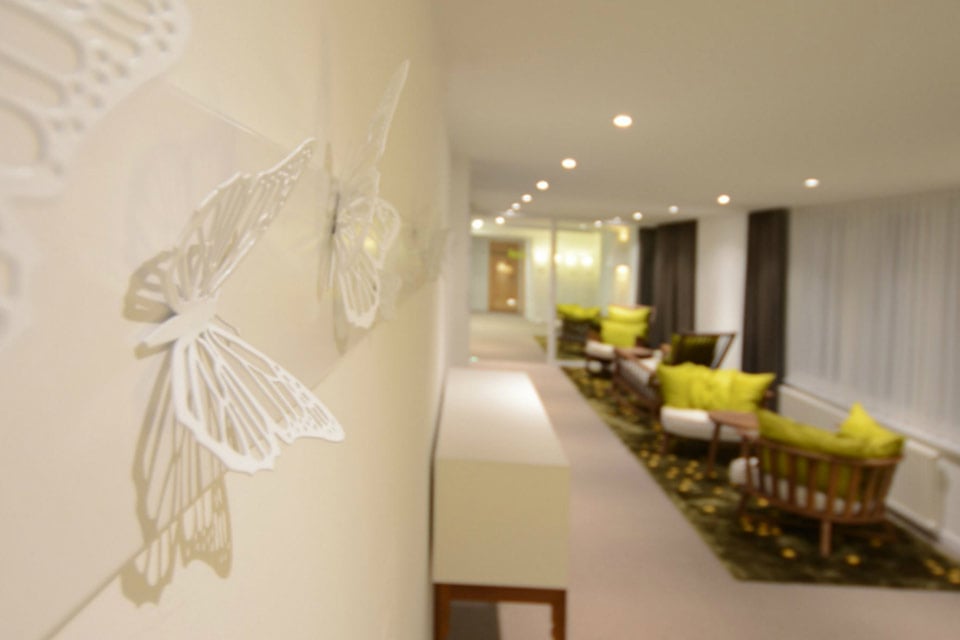Architects, interior designers, and, above all, lighting designers are increasingly aware of the influence, positive or negative, that lighting can have on the well-being of the observer and on the sensory perception it can have of their environment.
The main objective of the best decorative lighting projects in restaurants, hotels, private homes, and shops is always to be able to guarantee visual comfort and optimal lighting through the use of designer lamps and more.
High-profile designs require specific care as well as the evaluation of multiple aspects and compliance with certain design steps.
All this to be able to obtain a final result of strong technical and stylistic content, always ensuring maximum visibility in every corner and position of the location in question and making each context bright and aesthetically attractive.
Visual comfort and lighting: 8 aspects to consider for your project
Below, we will illustrate the necessary factors to consider to ensure visual comfort and high-performance lighting:
1. Always keep natural light in mind
2. Map out the light distribution: illuminance and luminance
3. Evaluate the quantity and quality of light
4. Calculate the aero-illuminant ratio
5. Set the amount of light that must pass through the glass: transmission of visible light
6. Expertly integrate natural light with artificial luminous fixtures
7. Choose designer lamps for your project
Below, we will analyze each point.
1. Always keep natural light in mind
Before anything else, always evaluate the natural luminous potential of the location you are dealing with and its access points of sunlight (balconies, windows, doors, etc.).
Both little and too much light can cause visual discomfort. Major changes in lighting levels or a strong light contrast, normally perceived as glare, can cause stress and fatigue.
Therefore, it is good to evaluate this aspect first and then move on to the selection of lighting design solutions that are the most suitable for the context.
The variable and dynamic nature of natural light affects the health of the body and mind, our circadian rhythms (sleep and wakefulness), heart rate, the functioning of our organs, and our state of mind.
When designing a decorative lighting system, it is essential to take full advantage of the access points of sunlight available and provide users with the best possible natural light. Furthermore, depending on the specific use of each room, the variation in the use of space at different times of the day should also be considered.
2. Map out the light distribution: illuminance and luminance
As a second step, it is necessary to map out the light distribution using a photometer and therefore calculate illuminance and luminance.
The illuminance, expressed in lux, is an objective quantity independent of the position of the surface with respect to the observer, which measures the quantity of luminous flux intercepted by a surface, and is given by the ratio between the luminous flux emitted by a given source and the receiving surface.
On the contrary, luminance is a subjective quantity dependent on the position of the observer. It corresponds to the amount of light that reaches our eye.
The unit of measurement is expressed in cd/m2, also known as nit, and corresponds to the different light intensities per unit of surface, emitted or reflected by the light sources and the surfaces that surround us.
It basically describes the brightness of light from the point of view of visual perceptions and psychological sensations. By measuring it, we can identify the contrasts of light and glow and understand if the light is evenly distributed or if it comes from a specific source.

Stralunata
3. Evaluate the quantity and quality of light
To assess the amount of brightness and its distribution in the environment, the illuminance must be measured at specific points and relevant to the functions that the light will have to release into the room.
To calculate the quality of the light, the UDI 100-2000 (also called Useful Daylight Illuminance) must first be modeled and integrated into the evaluation of daylight levels and glow, setting the values between 100 and 2000 lux as an acceptable range.
Then the DA is calculated. This abbreviation defines the Daylight Autonomy as well as the percentage of annual daytime hours in which a specific point of a certain space is kept above a certain level of lighting, set by the user.
The new European standard for daytime lighting EN17037 states that the following criteria (minimum requirements for DA) must be met:
- Illuminance of 300 lux for 50% of the space during more than half the daylight hours;
- 100 lux illuminance for 100% of the space more than half the daylight hours.
The DA is determined by the position, orientation, shade, and position of the windows, as well as the window-floor ratio and the transmission of visible light from the glass. The following aspects are essential to achieve an effective balance between all these variables.
4. Calculate the window/floor surface ratio
The calculation of the window/floor surface ratio is obtained by dividing the total area of the openings by the total area of the space associated with them.
This factor helps define the number of openings that will work effectively in each area of our project.
The Window Floor Ratio (WFR) value must be multiplied by the Visible Light Transmission (VLT) value, a concept that will be explored in the following point to ensure that the lighting design remains within certain lighting levels that guarantee effective degrees of visual comfort (usually a value greater than 0.15).
5. Set the amount of light that must pass through the glass: transmission of visible light
As described above, the relationship between the openings and the space must be integrated with the Visible Light Transmission (VLT), which corresponds to the amount of visible light that passes through the glass.
Glass with a 50% VLT allows 50 percent of the light to pass through and blocks the remaining 50 percent. With this, you may decide to incorporate large openings into the project and, at the same time, control the amount of light that passes through it, also adding protection from UV rays and glare.
To obtain effective results, all these analyzes must be added to the calculation of other relevant factors, such as the coefficient of the Solar Heat Gain and the U value. Local regulations must be taken into consideration, as well as the technical specifications of the types of windows chosen.
Furthermore, it is essential to evaluate the views towards the outside, integrating qualitative factors such as the urban or natural landscape or other elements that could be observed from each transparent surface. Consider incorporating solar control systems or other methods that influence the visual comfort of the interiors of the project you are dealing with.
6. Expertly integrate natural light with artificial luminous bodies
The success of the best decorative lighting projects stems from theperfect interaction and integration between natural light and artificial lighting.
Overall, the lighting design composition will be fresh and chic without being exaggerated or straining the eye.

7. Choose designer lamps for your project
Choosing designer lamps for your project means choosing quality, performance, and style at 360 degrees.
The lighting fixtures designed by expert, visionary designers and handcrafted products show the technical-functional and aesthetic side in a perfectly balanced formula.
This is because each of them is made with precious, resistant materials and is designed not only to illuminate the environment but to decorate it with elegance and a touch of flair.
According to the needs of the client, requests include models among the models, including: Alì and Babà, both in the applique version and as a suspension or table. In each variant, this solution will be able to give equal visual comfort to all observers and optimal lighting throughout the environment it will occupy.
Simple lines and material soul given by the solid consistency of the opaque white ceramic used for the realization of the diffuser (alternatively it is also possible to have it in white linen).
Another valid solution is Ululì-Ululà, a spherical shaped floor lamp with fiberglass structure and lace inserts: a set of functional infusion materials, a feeling of intimacy through light and of creating evocative designs that echo the structure of the lunar surface . With this lamp, the lighting finds full expression in the modern style.
On the contrary, Gangster has a more retro charm: available in three shapes, this suspension has a well-defined and solid shape, given the use of ceramic, on the inside. Directional, clear and homogeneous brightness and vintage style at will for any furnishing context.
8. Opt for dimmable solutions
Installing a dimmer switch means being able to enjoy a privilege that is not indifferent: adjust the light voltage of the source based on the day and time and, as a result, create the desired atmosphere at all times.
Dimmable lighting solutions are very safe and efficient. In addition, no special wiring is required to install a dimmer.

Moby Dick
Visual comfort and optimal lighting: the perfect formula for your lighting design project
In this article, we have shown you the salient aspects to consider to create a project with strong technical-aesthetic content , ensuring visual comfort and optimal lighting in different locations.
Follow our advice and choose the Karman designer lamps that you deem most suitable for the design you are dealing with: you will get an impeccable, high-performance, and visually striking final result.



